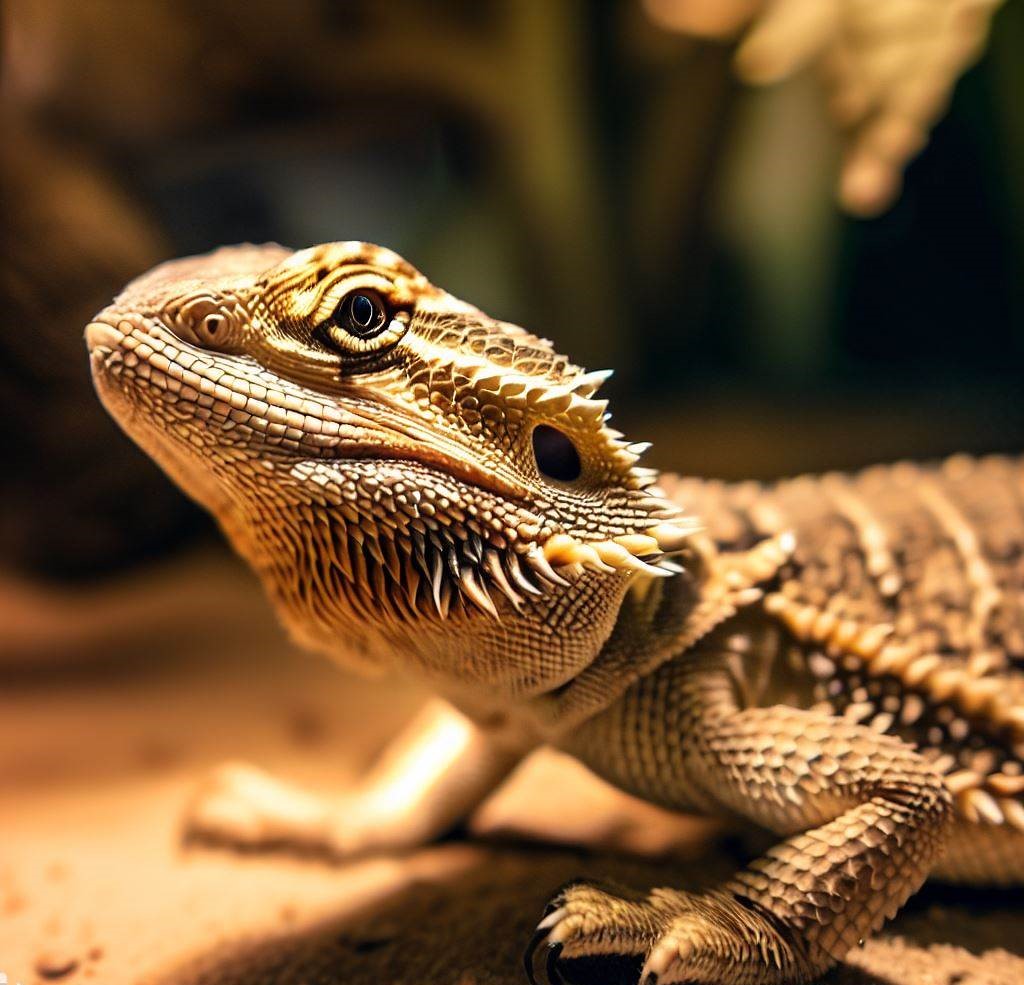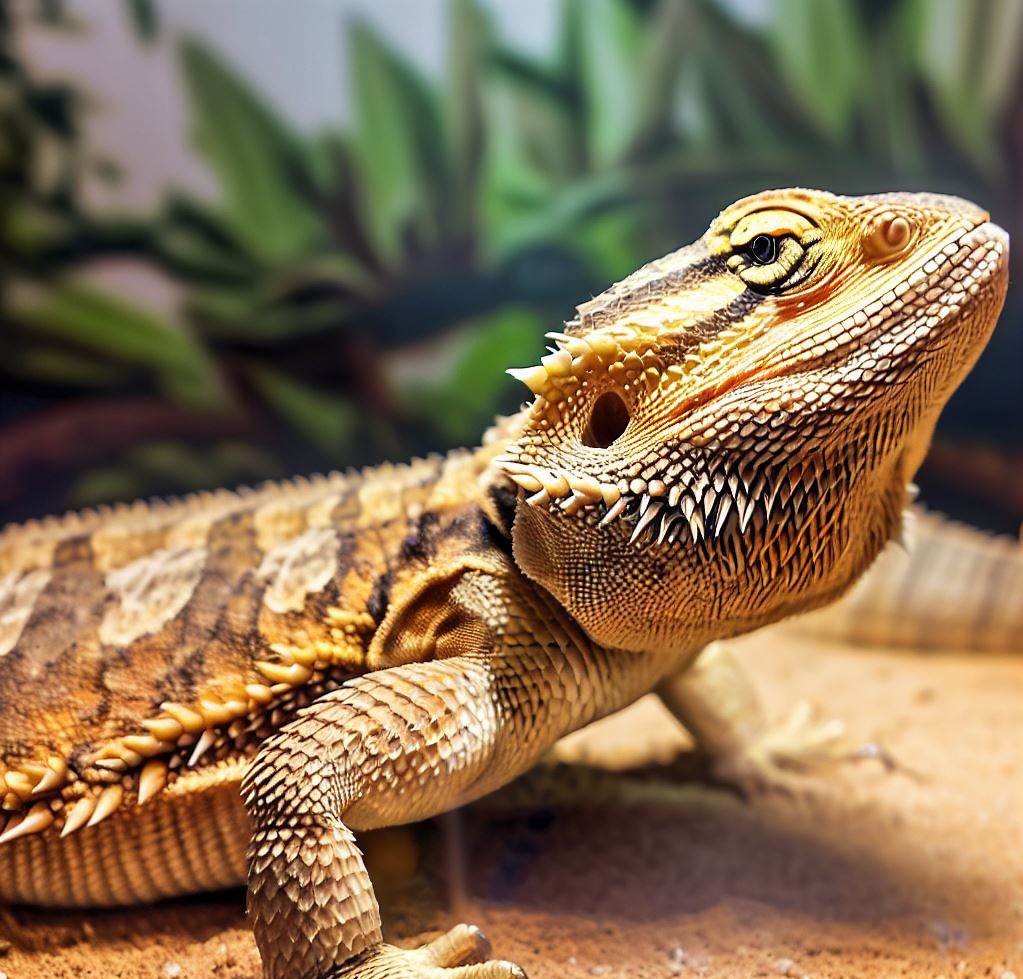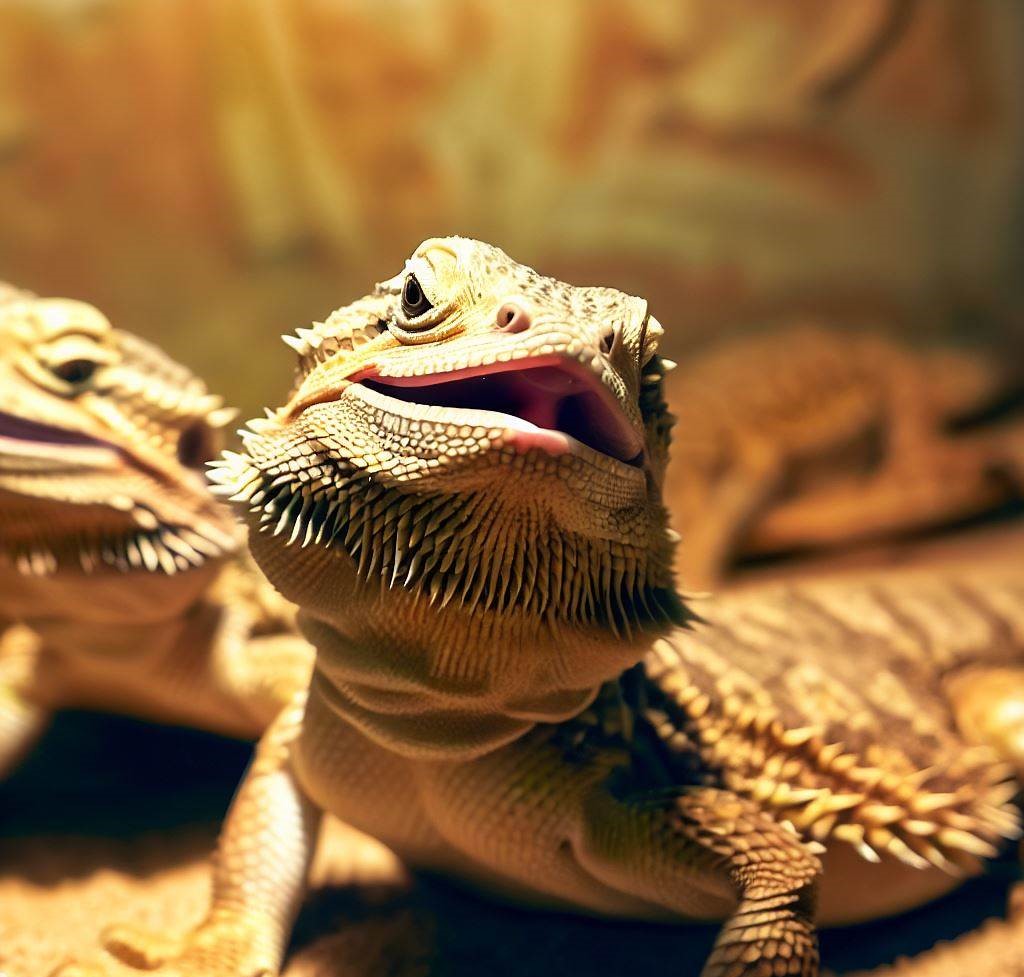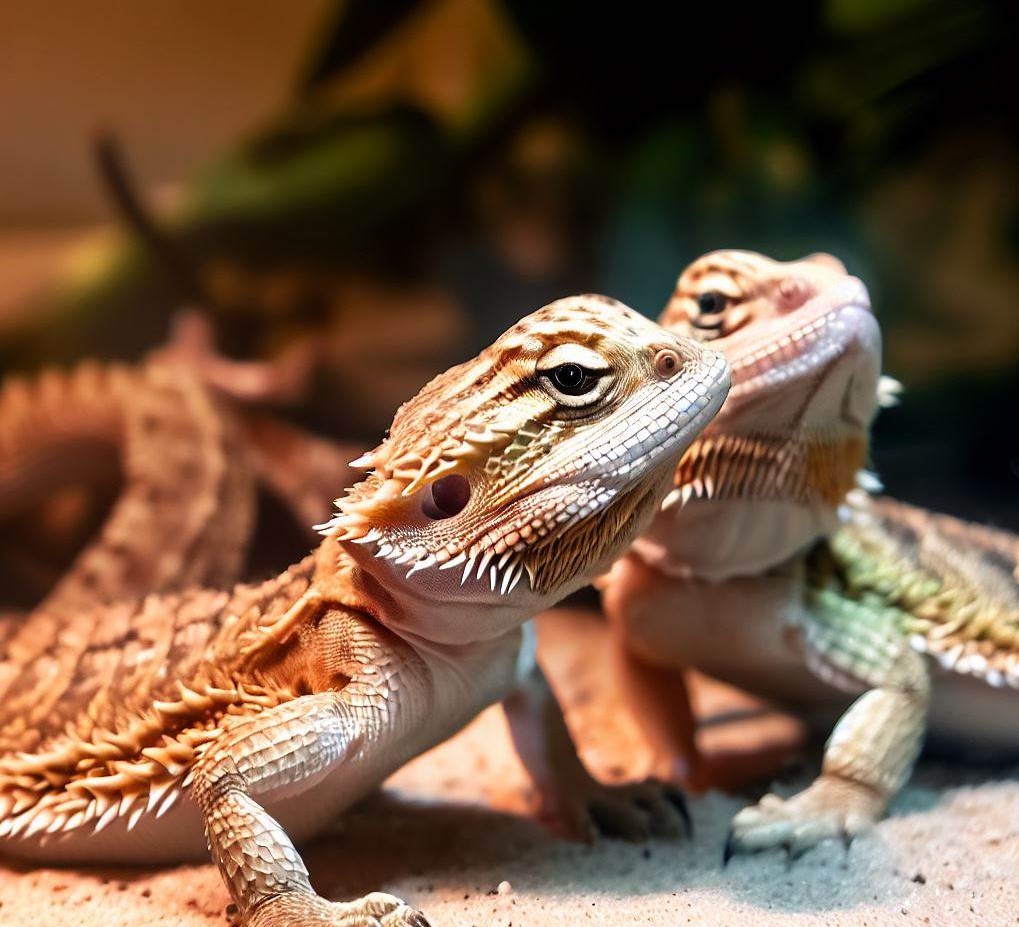As a reptile expert for many years, I am still captivated by small bearded dragons.
These mini versions of bearded dragons possess remarkable personalities that delight their owners.
What makes them so popular?
Their compact size is perfect for those with limited space, and their friendly nature, unique appearance, and manageable care requirements make them a favorite among both beginners and experienced reptile lover.
So, if you’re considering a tiny bearded dragon as your new pet, get ready for a delightful journey into the enchanting world of these lovable little beardies.
Table of Contents
Small Bearded Dragon Species

Small bearded dragons are a fascinating part of the reptile world. They’re a group of species distinct from their full-sized counterparts.
“Small” or “mini” bearded dragon refers primarily to Rankin’s Dragon, also known as Lawson’s Dragon or the Pygmy Bearded Dragon.
The Rankin’s Dragon (Pogona henrylawsoni) is a prime example of a dwarf bearded dragon species. It’s native to Australia and is the diminutive cousin to the larger, more commonly known Central Bearded Dragon (Pogona vitticeps). Though smaller in size, Rankin’s Dragons encapsulate all the charming traits of the larger species, making them equally captivating as pets.
Despite the size difference, Rankin’s Dragons need similar care to their larger counterparts. They need a balanced diet, proper lighting, and a comfortable habitat with a regulated temperature.
Even though they are small, they still require an interesting and engaging environment. A varied diet and access to UVB lighting are crucial for their health and well-being.
Characteristics Of The Mini Bearded Dragon
Mini bearded dragons share many characteristics with their larger cousins, Pogona vitticeps. Despite their small stature, they have the same spiny “beard,” expressive eyes, and curious nature.
However, they are unique from the larger cousins in a number of ways.
Let’s dive right into the characteristics of the mini bearded dragon that sets them apart.
Size and Dimensions: How Big Do Small Dragons Get?
Small bearded dragons are known for their more diminutive stature, which sets them apart from their larger relatives. Here’s what their growth pattern throughout different life stages looks like:
| Age | Mini Bearded Dragon Size |
| Hatchling | 2-3 inches |
| 3 months | 5-7 inches |
| 6 months | 7-9 inches |
| Adult | 10-12 inches |
As you can see, even as a hatchling, a mini bearded dragon is quite petite, measuring only 2 to 3 inches in length. As it grows over the next few months, it maintains its small size, reaching only 4 to 6 inches in three months.
These dwarf bearded dragons have usually grown to 7 to 9 inches long by six months. They stop growing when they reach adulthood, generally around 10 to 12 inches long.
These numbers illustrate the small, compact size of the mini bearded dragon throughout its lifespan. It’s crucial to remember that these sizes can vary slightly, and genetics, diet, and care can all play a part in your pet’s growth.
The mini bearded dragon’s compact size makes it an ideal choice for those who desire a small, manageable pet.
Unique Features
Small bearded dragons possess unique features that make them fascinating pets. Despite their size, they maintain the playful and curious nature of their larger counterparts, providing endless entertainment.
Additionally, their vibrant color patterns and striking markings add to their appeal, showcasing a beautiful blend of hues from earthy tones to vivid shades.
Lifespan
Generally, these mini bearded dragons typically live for about 5-8 years in captivity. While it might seem less than the larger species, it is, in fact, a remarkable lifespan for such a small creature.
Every stage of their life, from infancy, through the juvenile period to adulthood, is packed with unique behaviors and growth. An exciting aspect of the Pygmy’s life cycle is the rapid growth in the early stages.
The Smallest Bearded Dragon

When we talk about the most miniature bearded dragon, we’re referring to Rankin’s dragon, also known as the dwarf bearded dragon. This adorable species, scientific name Pogona Henrylawsoni, reigns as the tiniest among the bearded dragon family.
Rankin’s dragons typically reach 10-12 inches when fully grown. They share similar traits with their larger cousins, the Pogona Vitticeps, including the distinctive “beard.” But, they are recognizably smaller, giving them a unique charm.
Don’t let their small size fool you, though. These tiny bearded dragons are full of character! They exhibit a lively and active personality. They are interactive and interesting, making them fascinating and delightful pets.
Key Differences Between Dwarf And Larger-Bearded Dragons
The first noticeable difference between dwarf and larger bearded dragons is size. While a fully grown dwarf bearded dragon, like the Rankin’s dragon, reaches 10-12 inches, larger varieties such as the Central or Inland Bearded Dragon (Pogona Vitticeps) can grow 18-24 inches long.
Even though dwarf bearded dragons are smaller, they still have the iconic “beard,” characteristic of their larger relatives. But, their smaller size often makes them a more manageable choice for those with limited space.
Life expectancy differs too. A well-cared-for dwarf bearded dragon lives around 6-8 years. But larger bearded dragons, with proper care, can live up to 10-15 years. Despite their size differences, remember that both dwarf and giant bearded dragons need adequate maintenance, habitat setup, and attention to live a healthy and active life.
Habitat And Natural Environment Of Mini Bearded Dragons
Mini bearded dragons, like their larger counterparts, are native to the arid regions of Australia. This natural environment is a vast desert landscape with dunes, rocky areas, and sparse vegetation. These tiny bearded dragons are masters of this rugged terrain.
With a natural home in such environments, dwarf bearded dragons have evolved to be great burrowers. They use this skill to avoid the harsh daytime heat and escape predators. Active during the day or daily, they take advantage of the early morning and late afternoon sun while avoiding peak heat.
Their habitat preference remains the same in captivity. They need a warm, dry enclosure with plenty of places to climb and hide. Remember that small bearded dragons grow as pets when their surroundings resemble their Australian natural habitat.
Care And Maintenance
Caring for a mini bearded dragon is like caring for its standard-sized counterpart. But, due to its smaller size, there are some crucial differences to be aware of. Providing the proper care and maintenance ensures the health and well-being of your mini bearded dragon.
Now, let’s explore the aspects of enclosure size, food, feeding, temperature, and lighting to ensure your mini bearded dragon’s optimal care and well-being.
Enclosures/Terrarium Size
A crucial element in mini bearded dragon care is choosing the right enclosure. Even though these creatures are smaller, they still need room to move. A 40-gallon terrarium is often suitable.
This space allows them to exhibit natural behaviors like climbing, basking, and exploring. Avoid using sand or loose substrates, as they can lead to impaction if ingested.
Food and Feeding
Next on the list is their diet. A balanced diet is key to their well-being. Mini bearded dragons are omnivores. Their diet should include leafy greens, vegetables, and protein from insects like crickets, superworms or mealworms. Young dragons eat more insects for growth, while adults need more greens for fiber.
Dusting the food with calcium and vitamin D3 supplements prevents deficiencies.
Temperature And Lighting
The temperature and lighting in your dragon’s enclosure are vital. Mini bearded dragons need a temperature gradient. A basking spot at one end should reach about 95-100°F. The cooler end should be around 80°F. Temperatures can drop to roughly 70°F at night.
Lighting is also essential. UVB lights help your dragon synthesize vitamin D3, crucial for calcium absorption. Without it, they could develop metabolic bone disease. Turn off UV lights at night to mimic their natural habitat.
These are general guidelines. Always consult a reptile vet for specific advice about your dragon’s health and well-being. Your tiny bearded dragon will thrive with the proper care and attention.
Common Health Issues For Small Bearded Dragons

Like their larger counterparts, small bearded dragons are prone to several health issues that need attention and care. Being aware of these common health concerns is essential for maintaining the well-being of your mini reptilian companion.
Let’s explore some of the most frequently encountered health issues in small bearded dragons.
Parasites
Parasites like mites, ticks, and internal parasites like worms can affect small bearded dragons. These pesky organisms can cause discomfort, weakness, weight loss, and other symptoms.
Regularly inspecting your dragon for signs of parasites, maintaining proper hygiene in its enclosure, and seeking veterinary treatment when necessary is crucial preventive measures.
Respiratory Infections
Respiratory infections, including pneumonia, can affect small bearded dragons if they are exposed to damp or cold environments, inadequate temperatures, or poor ventilation. Symptoms may include wheezing, difficulty breathing, nasal discharge, and lethargy.
Prompt veterinary care and ensuring appropriate habitat conditions can help prevent and manage respiratory infections in your small bearded dragon.
Metabolic Bone Disease
Metabolic Bone Disease (MBD) is a common concern in small bearded dragons, particularly those with improper nutrition or inadequate access to UVB lighting. MBD leads to a deficiency in calcium and other essential nutrients, weakening bones, deformities, tremors, and difficulty moving.
Providing a balanced diet rich in calcium, vitamin D3 supplementation, and access to proper UVB lighting is vital for preventing and treating MBD.
Dehydration
Small bearded dragons are sensitive to dehydration, which can occur due to insufficient water intake or inadequate humidity levels in their environment. If left untreated, dehydration can cause many health problems, such as lethargy, sunken eyes, wrinkled skin, and even organ failure.
Ensuring access to clean, fresh water at all times and maintaining appropriate humidity levels in the enclosure can help prevent dehydration. These health issues highlight the importance of proper care. Regular vet check-ups, a balanced diet, and an appropriate habitat go a long way in preventing these issues.
Your mini bearded dragon depends on you for its health. Stay observant and proactive for a healthy and happy pet.
Conclusion
Small or dwarf bearded dragons offer a unique and charming twist to pet keeping. They pack all the captivating traits of their larger counterparts into a more manageable size, making them increasingly popular among reptile lovers.
However, don’t let their small stature fool you – caring for them requires thoughtful attention to their enclosure, diet, temperature, and regular health check-ups. It’s a commitment that rewards you with a gratifying and vibrant experience.
So, prepare to embark on a captivating journey with your small bearded dragon companion!
FAQs
Can the smallest bearded dragon make a good pet?
Absolutely. Despite their smaller size, they make great pets. They have vibrant personalities and unique behaviors, just like larger bearded dragons.
What are common health issues in small bearded dragons?
Small bearded dragons can suffer from common reptile health issues like parasites, respiratory infections, metabolic bone disease, and dehydration. Regular veterinarian check-ups can help in the early detection and treat certain illnesses.
What kind of care does a tiny bearded dragon need?
A tiny bearded dragon requires similar care to a larger bearded dragon. They need a properly sized terrarium, a balanced diet that includes both insects and greens, and appropriate heat and light sources. But, due to their smaller size, the quantity of food and the size of the enclosure may vary slightly.
Alina Hartley is a small-town girl with a ginormous love of bearded dragons. It all started with Winchester, a baby bearded who was abandoned at the shelter by his former owners because of a birth defect that caused one front leg to be shorter than the other. Alina originally went to the shelter looking for a guinea pig, but one look at Winchester and it was love at first sight. From that day on, Alina has dedicated her life to learning everything she can about bearded dragons. She loves helping new beardie parents start their incredible journey with these magnificent reptiles.
Follow her on:
LINKEDIN
TWITTER.
Read her latest articles HERE
Learn more about her HERE.

